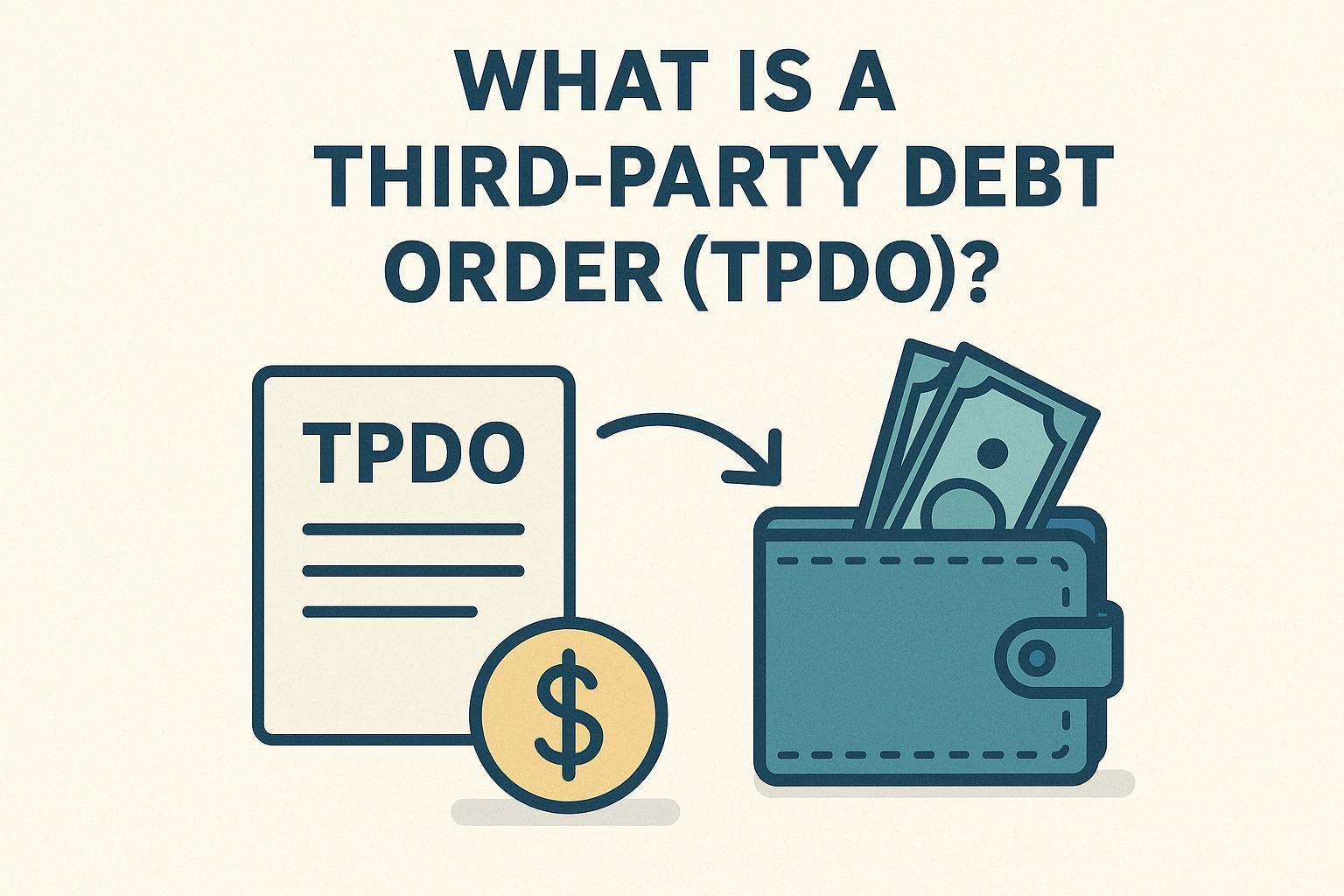
What is a Third-Party Debt Order (TPDO)?
Understanding Third-Party Debt Orders (TPDOs)
In the field of debt recovery, a Third-Party Debt Order (TPDO) is a pivotal judicial mechanism. This legal instrument is widely utilized in the United Kingdom to enforce court judgments. It obliges banks or other financial institutions to pay the creditor directly from the debtor’s account. For both creditors and debtors, understanding the complexities and repercussions of TPDOs is essential.
The Mechanism of a Third-Party Debt Order
A TPDO commences with a creditor applying to the court for such an order. After this application, an interim order is typically issued without the debtor’s awareness. This hidden phase is deliberate, aimed at ensuring the debtor cannot withdraw funds from the account being targeted. Once the interim order is issued, the bank or financial institution involved is required to freeze the debtor’s account up to the value of the judgment debt.
The Role of the Court
The court’s involvement is crucial in the TPDO process. Initially, it grants an interim order to safeguard the creditor’s interests. Following this, a court hearing decides whether to finalize the interim order. At this hearing, debtors have the chance to oppose the order. If the court is convinced of the debt’s validity and its non-payment, a final order is issued. This directs the bank to transfer the designated amount to the creditor.
Conditions for Issuing a TPDO
Certain prerequisites need to be fulfilled for a TPDO to be issued. Primarily, there should be an extant judgment or a court order pertaining to the debt. Additionally, the debtor should maintain funds in a bank account that the creditor is legally entitled to access. The court rigorously examines these conditions to uphold fairness and legality in the process.
Implications for Debtors and Creditors
For debtors, a TPDO can present considerable difficulties. It limits their financial access and can potentially disrupt ongoing financial obligations. It is therefore beneficial for debtors to promptly address any TPDO notifications and seek legal advice if necessary.
For creditors, a TPDO provides a dependable means of debt recovery. It offers an enforced mechanism to ensure owed amounts are secured and sent directly to the creditor, thus reducing delays and complications in the debt collection process.
Alternatives and Considerations
Prior to opting for a TPDO, creditors often explore other options such as negotiating settlements or using alternative debt recovery methods. TPDOs are generally used when these prior attempts have not succeeded, making them a method of last resort.
Initial Steps in the TPDO Process
Understanding the initial stages of the TPDO process is vital. When a creditor perceives a necessity to use this tool, the first action is filing an application with the court. This application involves presenting evidence of the debt, the existing judgment, and any previous attempts to recover the debt. Once the application is reviewed and deemed appropriate, the court issues an interim order.
Interim Order: Significance and Impact
The interim order is critical as it serves to inform the bank about the TPDO. The role of the bank is crucial here; it must freeze the debtor’s account, up to the amount mentioned in the order. This ensures that the debtor cannot manipulate funds to avoid payment. The debtor remains uninformed at this juncture to prevent any preemptive attempts to circumvent the order.
Notification and the Debtor’s Rights
After the interim order is in place, the debtor receives a notification. This document outlines the nature of the debt, the interim order, and the upcoming court date for the final order determination. It is vital for debtors to pay attention to this notification, as it provides an opportunity to contest the order. If the debtor believes the debt is unjust or has evidence of settlement, this information can be presented at the subsequent hearing.
The Court Hearing: An Opportunity for Dialogue
The court hearing following the issuance of an interim order is an essential stage of the TPDO process. During this hearing, debtors can challenge the order. Producing evidence of any inaccuracies related to the debt or demonstrating circumstances that may influence the court’s decision, such as financial hardship, are possible approaches. Creditors, on the other hand, will emphasize the debt’s validity and underscore previous unsuccessful recovery attempts.
Financial Institutions’ Role in TPDOs
Banks and financial institutions are key stakeholders in TPDOs. Upon receiving a TPDO, they are legally obligated to adhere to the court’s directives by freezing the specified account. They are responsible for maintaining this status quo until the court provides further instructions. Their compliance with these orders plays a crucial role in the effective enforcement of court judgments.
Finalizing the Order: Conclusion of the Process
Once the court has heard arguments from both parties, it arrives at a decision regarding the final order. If the court endorses the creditor’s claim, the final TPDO is issued. Consequently, the financial institution transfers the specified funds from the debtor’s account to the creditor. On the other hand, if the court sides with the debtor, the interim order is dismissed, and the account is unfrozen.
Mitigating the Impact of a TPDO
For debtors, mitigating the impact of a TPDO involves proactive actions. Contacting financial advisors or seeking legal assistance can provide necessary guidance. Exploring potential options for negotiating settlements or restructuring payments can prevent future orders. For creditors, maintaining a robust communication channel with debtors can facilitate alternate resolutions, potentially negating the need for a TPDO.
In conclusion, while a Third-Party Debt Order serves as an effective tool for debt recovery, careful consideration must be given to its implications and legal prerequisites. Both parties involved should be fully aware of their respective rights and responsibilities to navigate the process efficiently and lawfully, ensuring compliance with judicial principles.
- Posted by
 admin
admin - Posted in Uncategorized
 Nov, 20, 2025
Nov, 20, 2025 Comments Off on What is a Third-Party Debt Order (TPDO)?
Comments Off on What is a Third-Party Debt Order (TPDO)?
